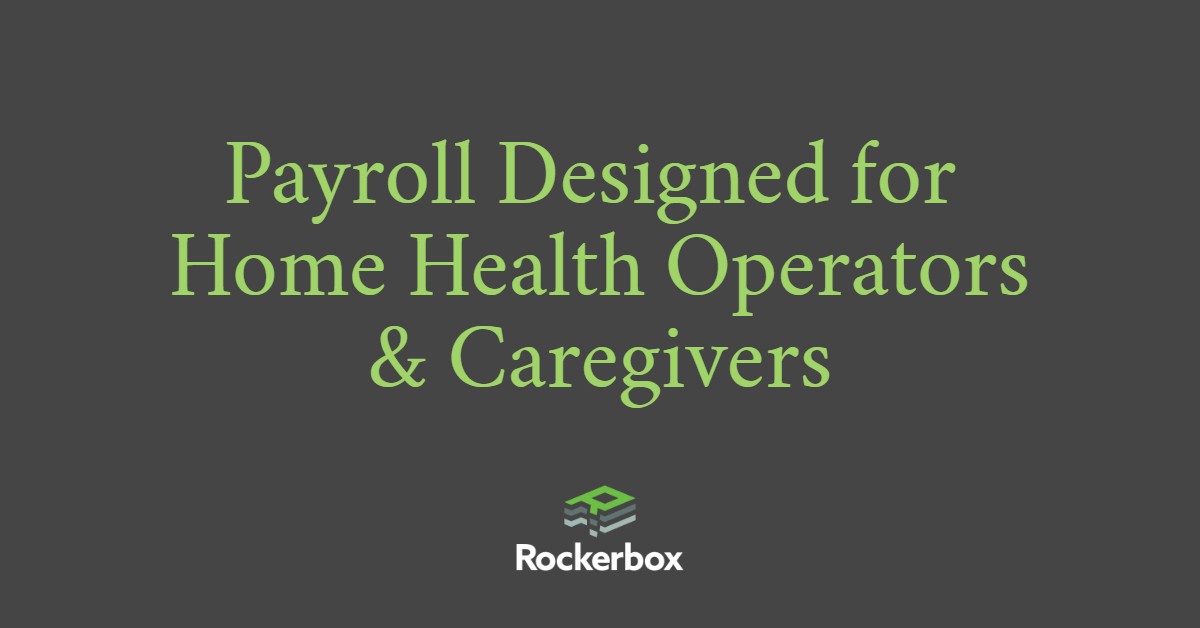
Optimizing Payroll for Home Health Care: Challenges and Solutions
The Challenges of Paying Home Health Caregivers
Paying home health caregivers presents numerous challenges due to regulatory, financial, and operational hurdles. Agencies must navigate inconsistent reimbursement rates, high turnover, compliance complexities, and cash flow difficulties. Below are the primary obstacles home health agencies face:
1. Low and Inconsistent Reimbursement Rates
- Medicaid, Medicare, and private insurance reimbursements often fail to cover the full cost of care.
- Reimbursement rates differ by state and payer, making financial planning difficult.
- Delays in government program payments create significant cash flow issues.
2. High Turnover and Workforce Shortages
- Home health agencies experience turnover rates exceeding 60% annually.
- Caregivers frequently leave for better wages or work conditions, increasing recruitment and training costs.
3. Compliance and Regulatory Complexity
- Agencies must comply with wage laws, overtime rules, and minimum wage requirements.
- State-mandated wage increases add financial strain.
- Electronic Visit Verification (EVV) systems create additional administrative challenges.
4. Payroll Timing vs. Cash Flow Realities
- Caregivers expect weekly or biweekly pay, while agencies may not receive reimbursement for 30–90 days.
- This misalignment forces agencies to seek financing or delay payments.
5. Non-Billable Time and Administrative Costs
- Travel, training, and documentation time are often unpaid or undercompensated.
- Agencies must cover payroll taxes, workers’ compensation, and benefits, tightening margins.
6. Client-Centered Scheduling Challenges
- Unpredictable client cancellations and fluctuating hours lead to inconsistent caregiver pay.
- Managing on-call shifts complicates scheduling and payroll calculations.
Types of Caregiver Pay
Home health caregivers earn pay in various structures, including:
- Hourly Pay – Most common; influenced by wage laws and reimbursement rates.
- Overtime Pay – Often mandated at 1.5x base wages.
- Shift Differentials – Extra pay for nights, weekends, and holidays.
- Live-In or 24-Hour Shift Pay – Flat daily rates vary by state regulations.
- Mileage Reimbursement – Compensates travel but adds administrative complexity.
- Bonuses and Incentives – Used for retention and performance rewards.
Impact of Payroll on Cash Flow
| Pay Type | Impact on Payroll | Impact on Cash Flow |
|---|---|---|
| Hourly Pay | Recurring cost; fluctuates with scheduling | Regular but reimbursement-dependent |
| Overtime Pay | Increases costs significantly | Can create cash flow strain |
| Bonuses | Variable cost but boosts retention | Requires set-aside funds |
| Per-Visit Pay | Stabilizes per visit but inconsistent | Unpredictable, client-dependent |
How Rockerbox Can Help
Rockerbox provides solutions to optimize payroll and cash flow through Work Opportunity Tax Credits (WOTC) and payroll integrations. Leveraging tax credits and payroll efficiencies, agencies can reinvest in competitive caregiver wages while maximizing financial benefits.
Strategies to Optimize Payroll Expenses
1. Improve Scheduling Efficiency
- Use software to reduce overtime reliance.
- Cluster client visits to cut travel costs.
2. Leverage Tax Credits and Payroll Incentives
- Claim WOTC (up to $2,500 per new hire).
- Utilize FICA Tip Credits and state grants.
3. Optimize Pay Structures
- Offer shift differentials instead of overtime.
- Implement performance-based bonuses.
4. Reduce Non-Billable Costs
- Use EVV systems to prevent payroll fraud.
- Set clear travel reimbursement policies.
5. Align Payroll with Reimbursements
- Track reimbursement cycles to ensure timely payroll.
- Automate billing and payroll integration.
6. Monitor Payroll Metrics
- Keep labor costs within 50-60% of revenue.
- Benchmark against competitors to remain competitive.
Conclusion
Paying home health caregivers efficiently requires strategic planning and financial optimization. Rockerbox helps agencies maximize WOTC benefits, improve payroll operations, and enhance cash flow, ensuring that caregivers receive fair and timely compensation while agencies remain financially sustainable.